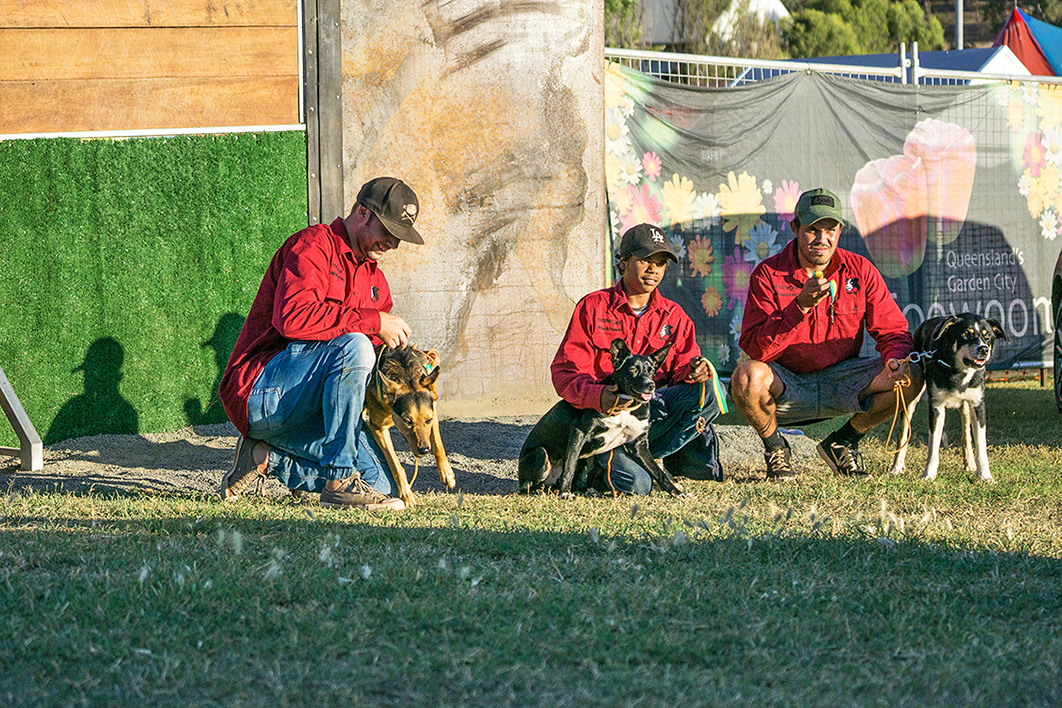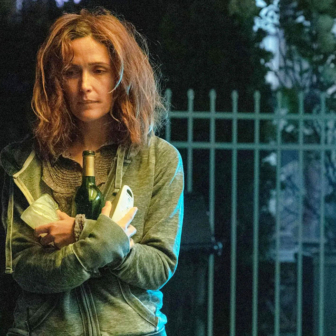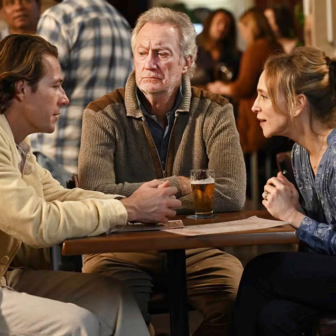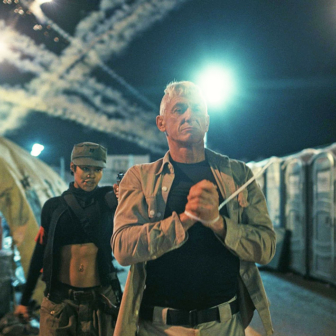I went to see Backtrack Boys for the dogs. My old girl, whom we called The Dowager Dog, died six months ago and I miss her daily. So I headed in to watch working dogs at full stretch because this is a spectacle of joy in motion. On a big screen too. The documentary that barnstormed every Australian film festival this year is now playing in multiplexes.
Early on we see jackeroo-turned-youth-worker Bernie Shakeshaft and a gaggle of teenage boys, each with a dog at his side. He shows the boys how to push the dogs gently down to the ground.
“I want you to rub your hands together,” he says. “Like this. Rub them until they are really warm.”
“Now put your hands like this.” He stretches his hands out, palms down.
Their hands hover just above the dogs. “That’s right,” he says. “Like this. You don’t need to pat your dog, just hold your hands above them. Nice and slow.”
It’s an exercise in focus and concentration. The dogs are tranquil; it is the boys themselves who are being trained to be calm.
Backtrack Boys is about an unorthodox experiment that began a decade ago in a shed outside Armidale, New South Wales. It seems to be working, taking kids in trouble, kids in danger of being locked up, kids who have been locked up, and helping them find a purpose.
“We have three aims,” says Shakeshaft. “To keep them alive. To keep them out of jail. To help them find their hopes and dreams.”
Catherine Scott, a seasoned documentary-maker, followed the boys for two years. She draws out three of them, and we get to know two really well.
Zach, a tall, gangly kid just starting to shave, is one. He’s been in the program for a few years, and is stepping up to take responsibility. He’s discovered that he can read, and that he enjoys reading for himself. One of the most affecting glimpses we get is of the boys working in a reading program, reading aloud to each other with a growing confidence. “These are kids who’ve been labelled unteachable,” says the volunteer teacher, in a quiet aside. There’s also an inspiring glimpse of a young girl, sitting in a paddock, reading to her dog.
Another we get to know is young Russell, aka Rusty. He’s small, tow-haired and at times defiant. He hasn’t yet hit puberty. Life has dealt him a pretty rough hand. His mum died when he was a few weeks old, and his father admits he’s pretty useless as a parent.
When things get too rough for Rusty, he’s inclined to have an outburst of rage and punch a wall. “Muck up,” he says. “I spit on a girl and punch a hole in a wall.” Now where can he have learned that?
In country towns, Friday and Saturday nights are the danger zones for kids with nothing to do. Years ago, Bernie discovered that many agricultural shows have cattle-dog trials. The boys trained up the dogs, and themselves, and hit the road in a specially designed truck ready to show off their stuff. They’ve rarely been beaten, and it’s a lovely thing to watch. Should a dog fail the jump on the first go, youthful arms catch him. I guess there’s a lesson there too.
According to Shakeshaft, 78 per cent of boys sent to juvenile detention reoffend. The systems, he says flatly, don’t work. School suspensions, juvenile detention, adult prisons. None of them works.
Many of the Backtrack Boys are Indigenous, though not all. That’s not the film’s focus, but the demoralisation of going to job interviews — the sheer challenge of trying to dream a future in areas where there is little work — underlies one of the setbacks we see.
But we see moments when the boys are gently encouraged to overcome them. It’s quite something to be able to gain these boys’ trust sufficiently to enable them to talk about their feelings. Bernie Shakeshaft does it. And so does Catherine Scott. It’s an all-woman team behind this film: Scott was her own cinematographer, as well as writer and producer–director. Andrea Lang has edited it so that the story unfolds with moments of tenderness and small flashbacks, the drama building to a chest-tightening finale. A number of women share various producer credits with Scott: it speaks of an impressive collective endeavour, supporting the film.
It’s also quite something to share the film’s final moment, which involves eight excited puppies trying to lick to death a boy lying on the grass.
Beautiful Boy is another film about a boy in big trouble. In this case, he’s a kid who appeared to have everything going for him: top grades at school, his pick of colleges, a supportive mother and stepfather, a home with books, music and choices. A boy who became addicted to methamphetamine.
It’s based on two memoirs, Beautiful Boy, by the writer David Sheff, and Tweak: Growing Up on Methamphetamines, by his son Nic. Sheff had previously written about his experiences with his son’s addiction in the New York Times: looking back on his reportage, it’s clear that the film smooths out many bumps.
Originally Cameron Crowe was slated to direct the film; finally the producers found the Flemish director Felix van Groenigan (The Broken Circle Breakdown), and Luke Davies reworked the script.
Beautiful Boy is suffocatingly sincere. Steve Carell plays the father, David, and the young male actor of the moment, Timothée Chalamet (Call Me by Your Name), plays his son Nic. Carell’s performance is full of controlled, internalised anger. Chalamet, even when lying, manipulating, stealing, panicking, shooting up or cooking up, is never less than engaging. And pretty. Which is one of the troubles I had with the film. The ugliness of meth, the wreck it makes of bodies, moods and minds is shown in soft focus.
Sheff’s early journalism about his son’s addiction and his own response at least tried to carefully explain the science: what methamphetamines do to the brain. The film attempts this, but only cursorily.
With the drug being described as “every parent’s nightmare,” I found myself wondering what Beautiful Boy could tell people in Sheff’s situation that they did not already know about the cycles of disbelief, anger, guilt, denial, hope and despair. Yes, there is a way through — for some. But recovery is fragile and always conditional.
In addition to prettifying the wreckage of methamphetamine addiction, the film-makers add insult to injury by loading the soundtrack with every iconic song they could find. Nirvana, Lennon’s “Beautiful Boy,” Neil Young, Massive Attack, and more — including, of course, the ultimate insult: Henryk Górecki’s Symphony of Sorrowful Songs. All are fine in themselves, but loading a soundtrack like this is a sure sign van Groenigan and producers don’t trust their audiences’ responses. There’s even a soundtrack album to match.
The only useful thought I could take away from this film is this: if your teenager, in the hormonal mood swings of puberty, starts declaiming the poems of Charles Bukowski, worry. Some early literary criticism might be prophylactic. •




